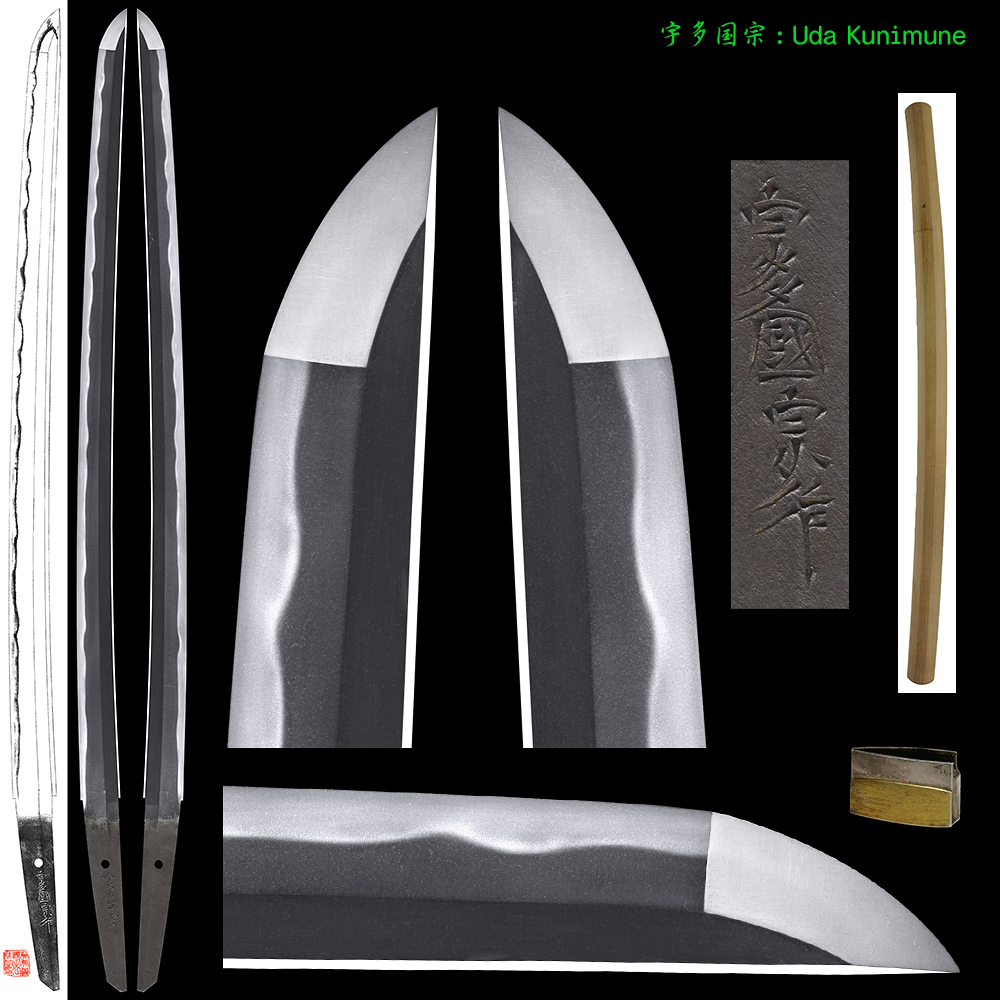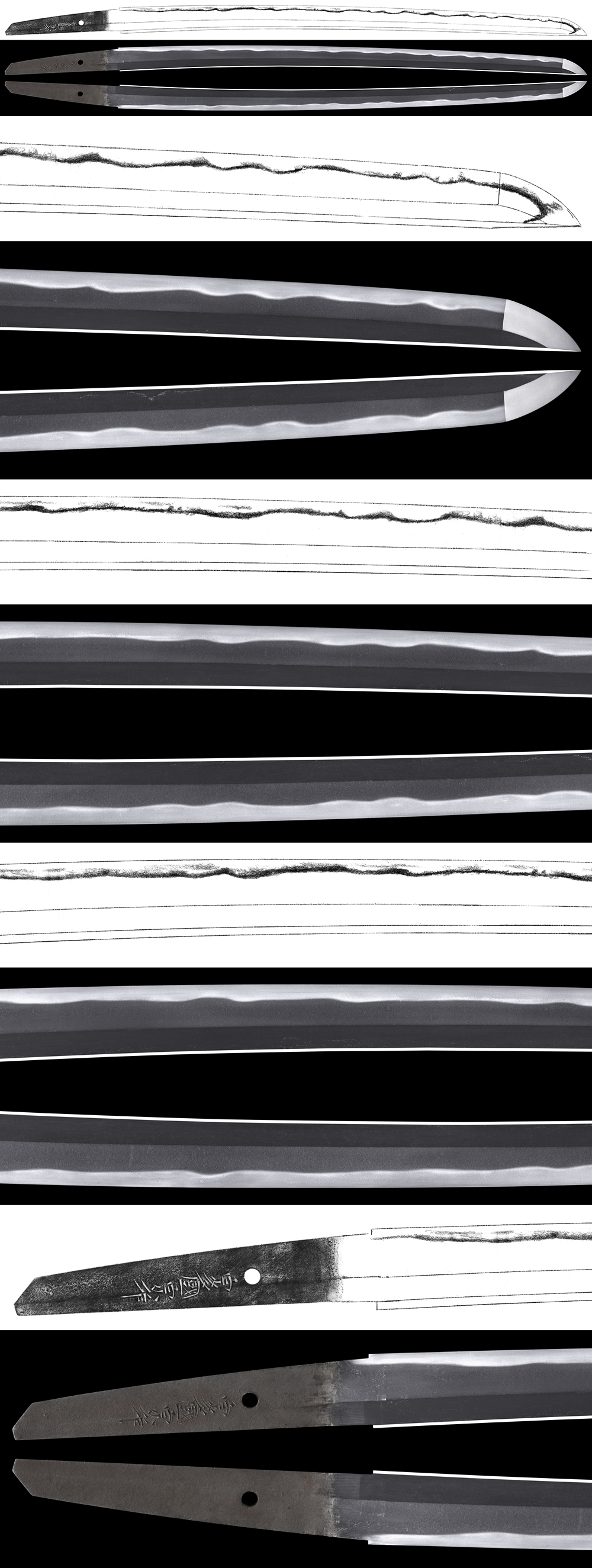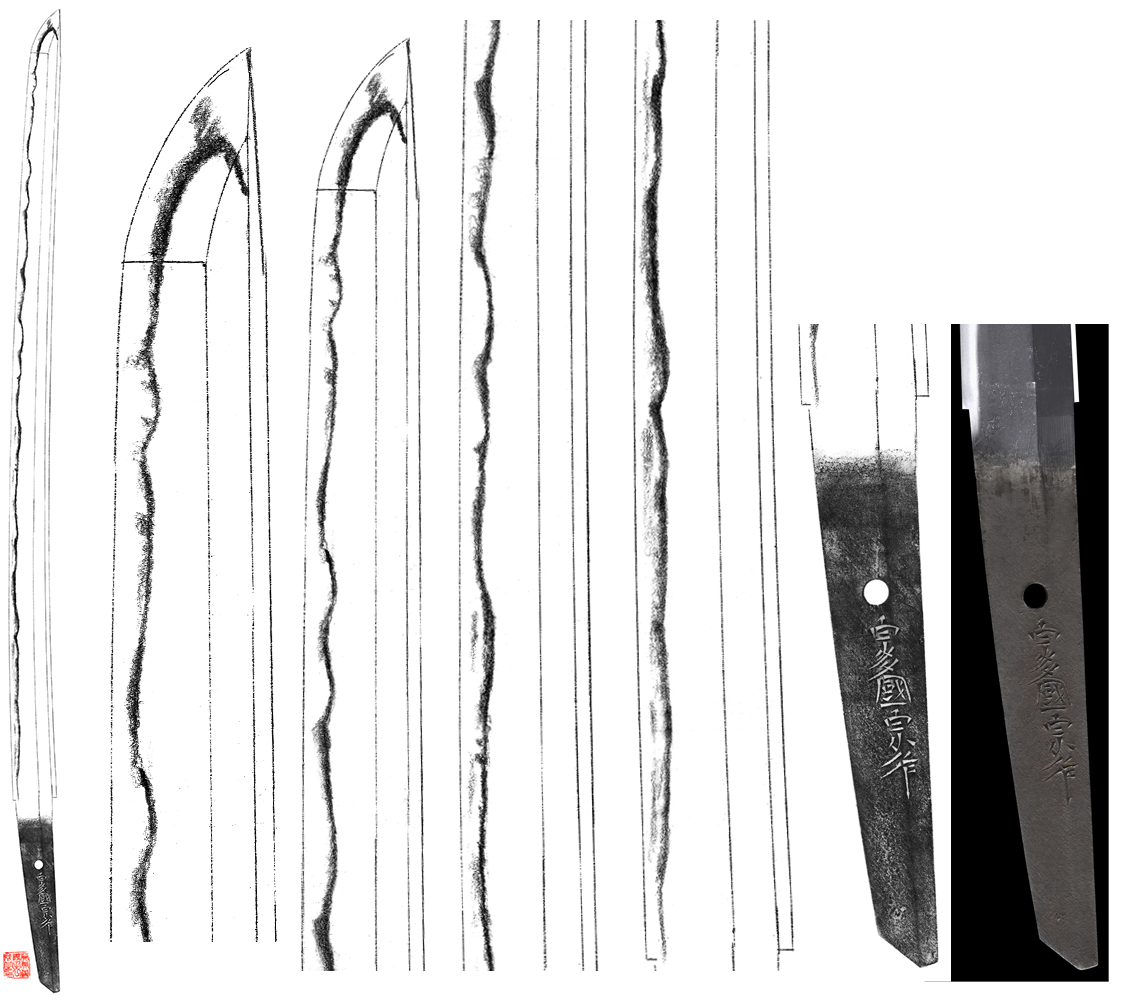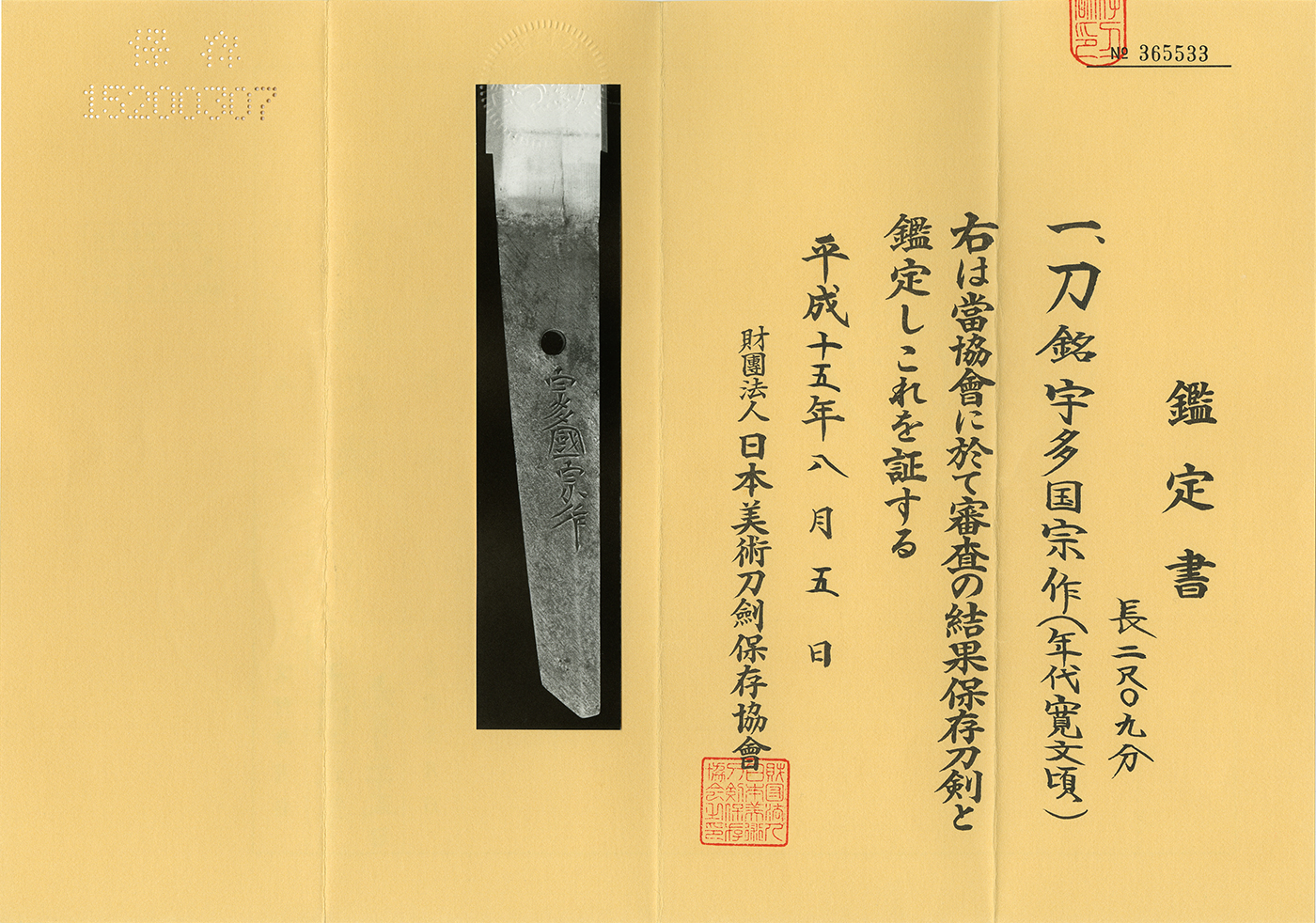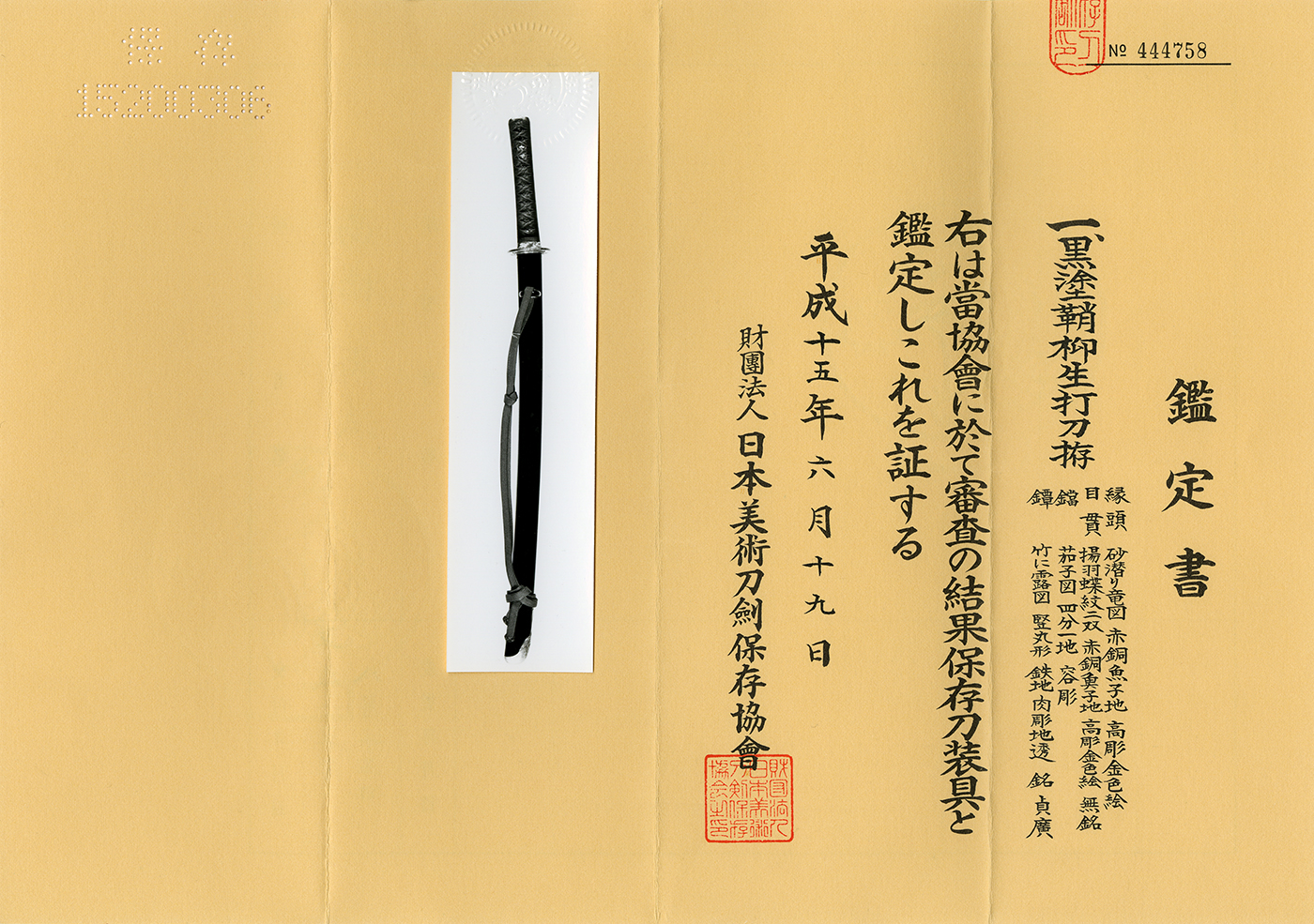Katana: Uda Kunimune
2017/01/05
Katana in Shirasaya with Koshirae (NBTHK Hozon Paper applied on the blade and
NBTHK Hozon Paper applied on Koshirae)
Signature : Uda Kunimune
Shinto: Chusaku: Ecchu
(We divide 4 sections for each sword as Saijyo saku, Jyojyo saku
Jyo saku and regular saku)
This Uda Kunimune belongs to Jyojyo saku ranking.
The blade was polished.
Habaki: Gold and silver double habakis
Blade length : 63.42 cm or 24.96 inches.
Sori : 0.90 cm or 0.35 inches.
Mekugi : 1
Width at the hamachi : 3.29 cm or 1.29 inches.
Width at the Kissaki : 2.34 cm or 0.92 inches.
Kasane : 0.73 cm or 0.28 inches.
Era : Edo period Circa Kanbun.
Shape : It is wide and thick rather short katana.
Jitetsu : Koitame hada well grained with jinie attached.
It is clear jigane.
Hamon : Nie deki notare ba with deep nioiguchi.
There is sunagashi works as well. The habuchi is soft end.
Special feature : Uda shool was originated in Uda area Yamato province.
After, Ko Nyudo Kunimitsu moved to Ettchu area. They were working at Nanbokucho period
and this school continued to Muromachi period (ouei era).
In the Ettchu area, Norishige, Go are famous and there are many good swordsmith at Nanbokucho period.
Koshirae: It is nice and compact koshirae. NBTHK Hozon Paper
Tsuba: Round shape iron tsuba with bamboo leaf design engraved in openwork.
Sedayoshi: He is late Edo period metal worker of Mito area.
Fuchi Kashira: Shakudo nanakoji plate with dragon design engraved and inlaid with gold.
Middle Edo Period to late Edo Period
Saya: Black roiro saya
Kojiri: Iron plate with eggplant design engraved. Late Edo Period
Menuki: Round shape Tachi menuki. Shakudo nanakoji plate with butterfly design engraved
and inlaid with gold. Middle Edo Period.
NBTHK Hozon Paper applied on the blade and
NBTHK Hozon Paper applied on Koshirae
Aoi Art estimation paper : whole Oshigata.
